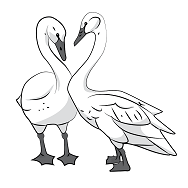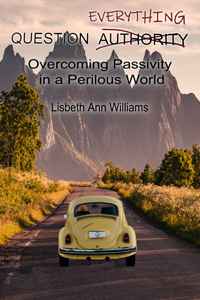Tigers in India, like our American buffalo and many keystone species, have endured mass slaughtering by humans. During the mid-1900s there were nearly 40,000 tigers in India; but as the human population grew and deforestation, loss of habitat, and poaching caused tiger populations to dwindle, there were less than two thousand remaining, a mere 25 years later. Fortunately, Indira Gandhi created a wildlife protection act in 1972 providing almost 30 tiger reserves. Unfortunately; however, many of the reserves are butted up next to human populations and a few humans have fallen victim to the tigers.
One male, T24, had been blamed for four deaths. He was removed from the reserve, leaving his mate and two offspring to survive without him. The female, unable to find her partner, grieved for a long period of time. In the end, another male moved into his territory and the female had no choice but to give in to the new dominant male. T24 was placed in a small enclosure, which was nothing more than a large cage. He began to suffer from intestinal problems, from the lack of exercise and having to accept whatever meat was provided for him. They operated to remove the blockage in his intestines, but the problem kept recurring, obviously, because they did nothing to eliminate the cause. Many of the citizens have protested, pleading for the animal to be freed and returned to the reserve; but he remains a prisoner.
A very wise man said, in the documentary in which I had learned about T24, that we should let Nature take its course. This is the same advice I give to those who call me about injured swans and other birds. He believed that what had turned T24 into a killer was when he had been captured and treated for a splinter in his paw. The anesthesia had worn off before they were finished and the tiger had run away. The tiger’s foot may have become infected and he might have died; but that was for Nature to decide. The man believed it was this human interference that turned the tiger into a “killer.” Based on the cruel and sadistic ways in which humans have treated other animals, it is no wonder that more of them do not hate us.
I will never understand this compulsion that so many people have, to control others, be it other species, or our own. We place animals in cages, in zoos, tie them to stakes, and lead them around by the neck on leashes. The wings of birds are often clipped to prevent them from flying away. When animals do not obey the humans’ wishes, they are often beaten. They are neglected and treated as though they were inanimate objects. More often than not, caged animals and pets become ill as they are prevented from living in the company of their own species and they are denied the ability to hunt or forage for their own food. In the case of those acquired through the illegal pet trade, most will die.
It is unnatural for any species to be confined. We even confine our prisoners, who also suffer from illnesses. The lack of exercise and sunshine, combined with poor quality food, leaves many of them in an unhealthy condition. There was a time when prisoners were made to do hard labor. Perhaps, they were better off than the prisoners of today, who often do not see the light of day. They are “pampered” with television and sedated with pharmaceutical drugs to keep them subdued.
The Bengal tiger of India is one of the most beautiful animals on the planet; but like so many other species, we have brought them to near extinction. Human life is valued above all other life. After the killings in India, large groups of men descended on the reserve to retrieve the bodies of the victims so that they could be buried. Personally, I would gladly give up my own life for such an animal. Let it consume me and do not waste precious ground to bury me, or have me wastefully cremated. On those rare occasions when a bear, or a lion, or a tiger attacks a human being, revenge is foremost on peoples’ minds. Those who hate these animals refuse to see that they have the same intelligence, feelings, and emotions that we have. Often, our compassion for an animal is misplaced. We believe that we must intervene, interfere, and “save” the animal; but this is not Nature’s way. I hope the day will come when we will learn collectively, to accept, to allow, and to stop interfering with the balance that Nature had already created before we arrived.



